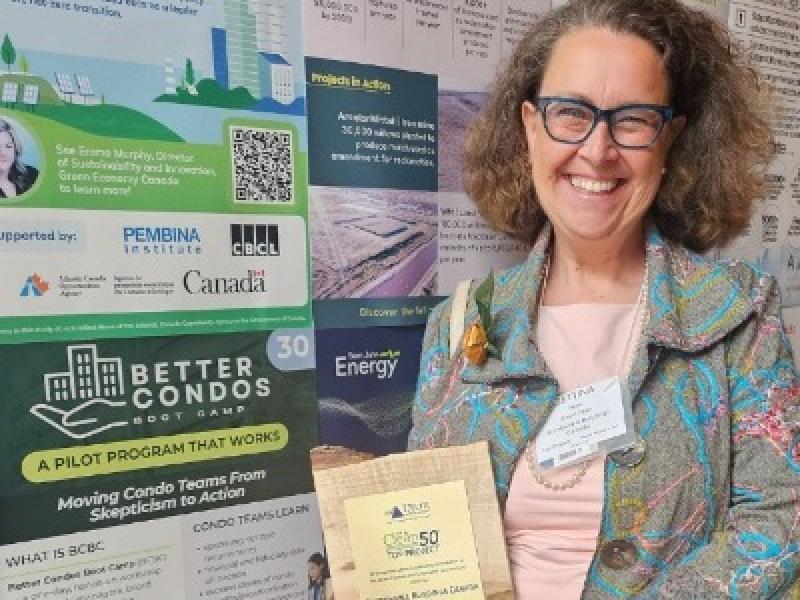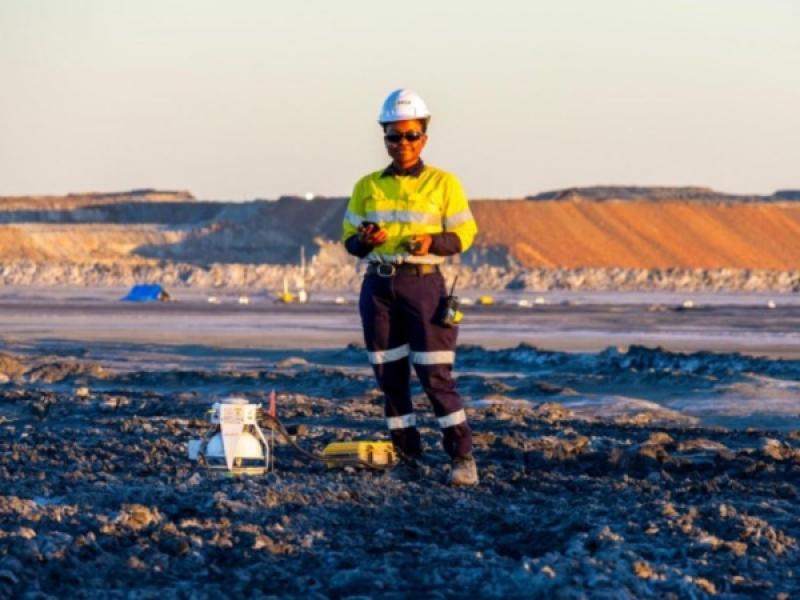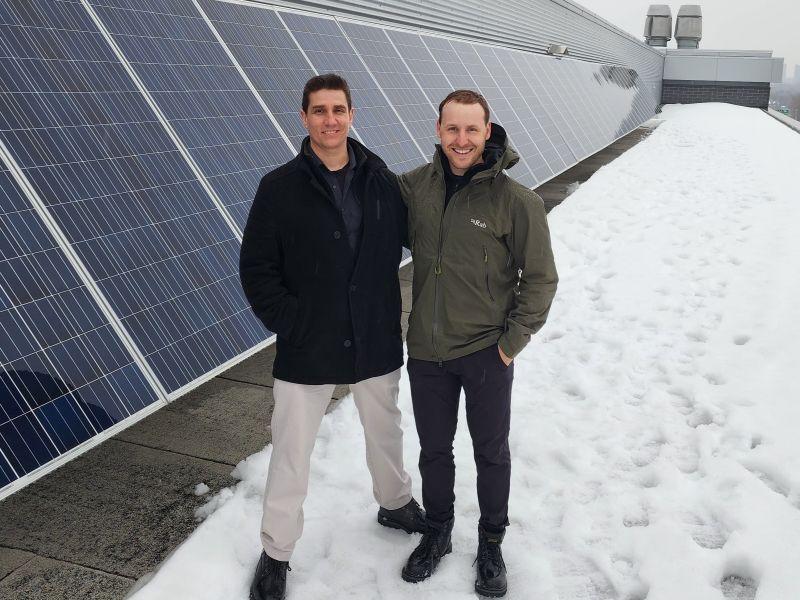
Toronto-based builder and developer Daniels Corporation has unveiled its decarbonization roadmap as it develops Brampton’s largest low-carbon, master-planned community.
The plan includes achieving near-zero, whole-life carbon emissions for all its communities which start development in 2026 and beyond – without the use of carbon or renewable energy credits.
“Internally, we just got to a point where we said, 'we've in the past lead on this issue and maybe today, we're not doing as much as we can to lead on this issue.' " Adam Molson, Daniels’ vice-president of rental communities and sustainability, explained. "So first, it was just how can we lead on this issue? What does even leading on this issue mean?
“It was clear to us that we have a unique opportunity as one of the larger developers in Toronto and in the country, and that our size and skill allows us to think about things a little bit differently, and that we hadn't necessarily been taking full advantage of that."
Since its founding in 1983, Daniels has built over 35,000 new homes across the Greater Toronto Area.
The first phase of the 19-acre Brampton community, known as MPV2, is under construction near the Mount Pleasant GO station in city's northwest. The first occupants are scheduled for 2026.
Daniels’ decarbonization roadmap
Work began on the roadmap two years ago by determining the company’s baseline emissions from five multi-residential, high-rise projects which started development between 2018 and 2020. Daniels determined it had a baseline of 1,660 kilograms of carbon dioxide (CO2) per square metre, with 385 kilograms from up-front emissions and 1,275 kilograms from operating emissions.
In the roadmap, this baseline is compared to “stacking almost four barrels of crude oil on each square meter of floor space.”
The company’s first-generation commitment, from 2021 to 2025, will be to attain a whole-life carbon intensity of 1,000 kilograms of CO2 per square metre. If successful, it would result in a 40 per cent emissions reduction from its baseline.
Whole-life carbon encompasses both the carbon emitted during the construction process and during the operation of the building. For the former, Daniels adopted the Toronto Green Standard version 3 methodology for energy modelling. For the latter, the company is looking to the Canada Green Building Council’s Zero Carbon Design Standard methodology for a 60-year lifespan.
Its second-generation commitment, from 2026 to 2030, aims for 600 kilograms in carbon intensity – a 64 per cent reduction from the baseline.
By that point, Daniels plans broad deployment of low-carbon technologies; a 20 per cent reduction in carbon intensity of major components; a five per cent increase in material efficiency; all-electric heating and hot water; rooftop and building-integrated solar arrays; and a 57 per cent reduction in thermal energy demand intensity.
“What we scratch our heads at is, so many plans that are coming out are announcements that are by 2040 and by 2050. They have no idea how they're gonna get there and yet, they're making a big angle,” Molson said. “For us, we think there's a lot we can do in the next three years that's really impactful.
"Let's focus on that now, and then use that as a springboard to the next thing.”
The company has begun implementing techniques and technologies in its planned communities to hit its carbon targets, including at MPV2. These include:
- electrification via geo-exchange, air-source heat pumps and rooftop solar installations;
- high-performance ventilation systems and enclosures;
- using materials such as mass timber and low-carbon concrete; and
- maximizing efficiency with the materials given.
The MPV2 community
Located on Bovaird Dr., MPV2 will consist of 120 net-zero townhomes and two mid-rise condominiums utilizing geo-exchange – an 11-storey west tower and a 14-storey east tower. The townhomes will use all-electric systems including rooftop solar panels. There will also be a community park.
According to a release, MPV2 will have 40 per cent lower emissions compared to Daniels’ baseline.
He expects two or three subsequent phases, with final completion around 2028 or 2029. One of those future phases will incorporate Passivehaus certification and mass timber, with other technologies and techniques promised “in the pipeline.”
MPV2 is being financed with a green loan from RBC under the bank’s Sustainable Finance Framework.
Daniels has partnered with Enwave Energy Corporation to implement sustainable energy solutions at MPV2, including geo-exchange. Low-carbon concrete products will arrive courtesy of a partnership with Lafarge. Molson also mentioned Markham, Ont.-based Metergy Solutions Inc. which is completing submetering for all of Daniels’ development pipeline.
“For us, we see that (the townhomes) as the new minimum going forward. It's technologically and financially feasible to do it today," he said. “In our mind, there is no reason at all why anyone, starting with ourselves, should be building a townhouse that’s not net-zero.”
The plan for the condos is considered more of a foundation, or the floor in terms of what Daniels can accomplish. Molson said the biggest challenge was not compromising on sustainability, while also providing affordability.
While geo-exchange helps, Molson sees hot water production as a challenge in terms of having a sustainable, affordable solution.
“We're in a very inflationary environment right now. We know that in the Toronto area especially, housing affordability continues to be a challenge," he said. “So we wanted to be aggressive as possible in terms of putting forth the low-carbon option, but we didn't want to be coming and asking people to pay more for it.”
“So many conversations I've been in, both at the institutional level and at the purchase level, is all about cost and cost justification, and ‘what's my payback?’ I'm excited about getting to the point where we can demonstrate that we can deliver all of this at less cost than doing the alternative, because then I think it opens up so many doors,” Molson said.
“So many tough questions go away where you don't have to fight to justify doing something different every time. People just see this is good value and good business, as opposed to just, this ESG thing that they have to do or this policy thing that they have to do.”










